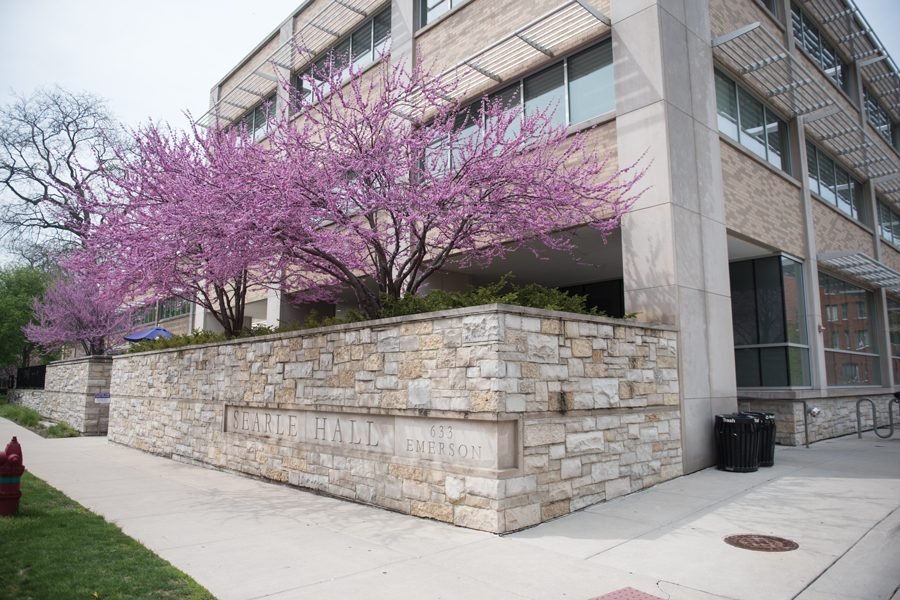Students express worries over details and scope of University’s updated testing protocol
Daily file photo by Katie Pach
Searle Hall, the location of Northwestern University Health Service. NUHS will be one of two on-campus testing sites for students in Evanston this fall.
August 23, 2020
Northwestern students are concerned about the lack of details around testing protocols for the fall, which will be implemented in partnership with Northwestern Medicine.
All students planning to return to campus will undergo a three-step testing protocol: first, a free at-home test; second, testing on arrival and a mandatory two-week quarantine; third, ongoing testing throughout Fall Quarter, according to the University’s COVID-19 Resource Center website.
“We currently plan to test students living in on-campus residence halls weekly. The University will have access to the testing results and will work with Residential Services to identify an ongoing testing schedule for those in the residence halls,” Director of Media Relations Jon Yates said in an email to the Daily. “Students will be expected to comply with any testing requirements.”
But Weinberg sophomore Aarthi Kottapalli expressed anxiety about the approach of the fall. While she said she felt like the University has adequate on-campus testing policies, she also said she wished the University offered more specifics as the beginning of the quarter approaches.
“There are a lot more details that they keep saying will come, which is stressful because we only have two weeks left until I go back to campus,” Kottapalli said.
A resident assistant for the 2020-21 academic year, Kottapalli will be among the first students to repopulate on-campus housing. Kottapalli’s main concern was with the testing of off-campus students. She pointed out that the lack of monitoring of off-campus housing made them higher risk and wanted the University to clarify how often they’ll be testing off-campus students.
Kottapalli’s worries stemmed from the recent outbreaks across college campuses. The University of North Carolina at Chapel Hill was forced to send students home just days after the start of the fall semester due to four clusters of coronavirus infections. The University of Notre Dame recently switched to remote learning in response to outbreaks traced back to off-campus gatherings, with the possibility of sending students home still looming.
Currently, the University plan includes a random sampling of off-campus students for testing, a lower frequency than on-campus residents. Communication junior Lily Feinberg, who will be living off campus this fall, is also concerned about the lack of off-campus scrutiny.
“I don’t necessarily mind, but I also don’t think it will be very effective,” said Feinberg. “I think that unless every student who’s back in Evanston is tested regularly, it’s not going to help.”
Feinberg recently got tested at a walk-in clinic. Without an appointment, she had a three-hour long wait, but the test itself was much shorter. Describing the process, Feinberg said “they took basically a q-tip and swirled it around each of my nostrils for three seconds.” She received a rapid test result in 10 minutes and another test result in two days, saying she “expected it to be way worse.”
Feinberg’s experience highlighted the potential accessibility of getting tested when facilitated properly. Kottapalli, however, remained concerned about the efficacy of the updated testing policies, emphasizing the need for collective responsibility from students.
“Overall, Northwestern’s policies are really good so far, especially compared to some other schools. It really just comes down to what the students do while they’re on campus,” Kottapalli said. “There’s only so much the school’s policies can accomplish. You need the students to actually care to follow them.”
Email: [email protected]
Related stories:
— Northwestern releases at-home COVID-19 testing procedure
— New regulations for on-campus living in Fall Quarter, ways to personalize your room
— University announces “Wildcat Wellness,” other pandemic safety regulations


